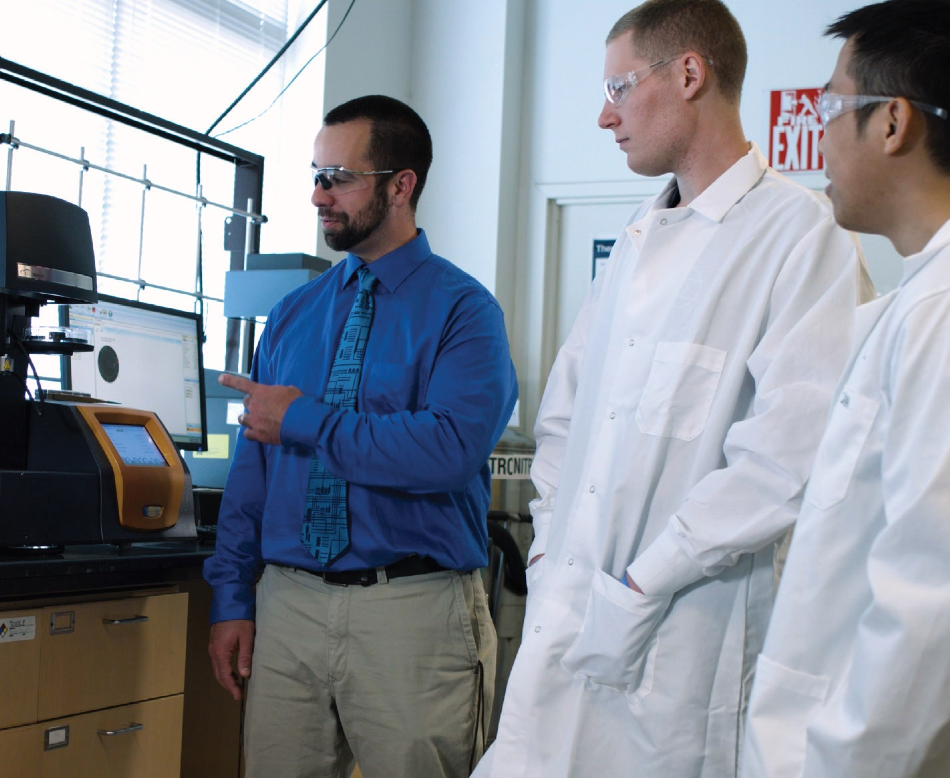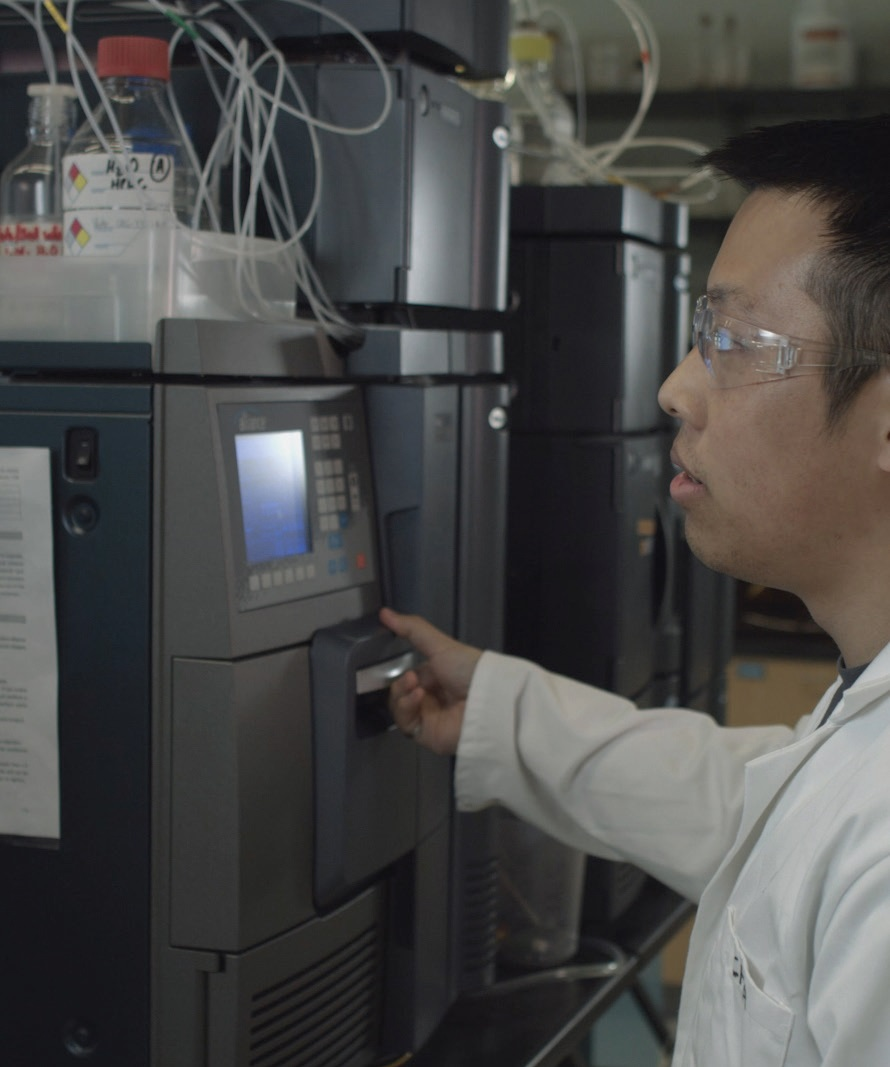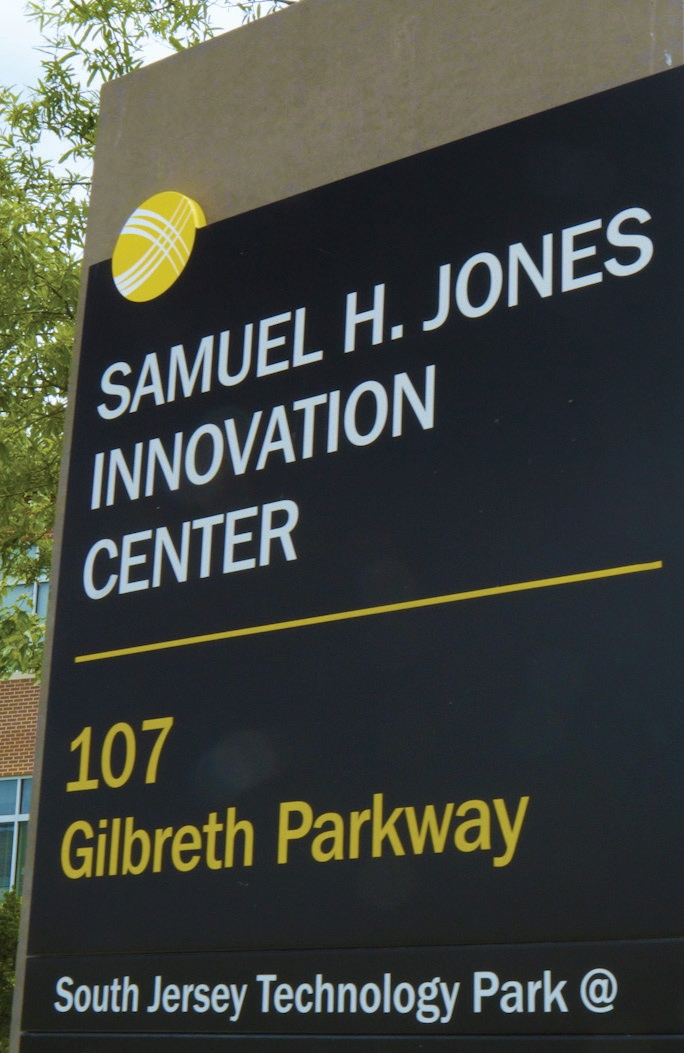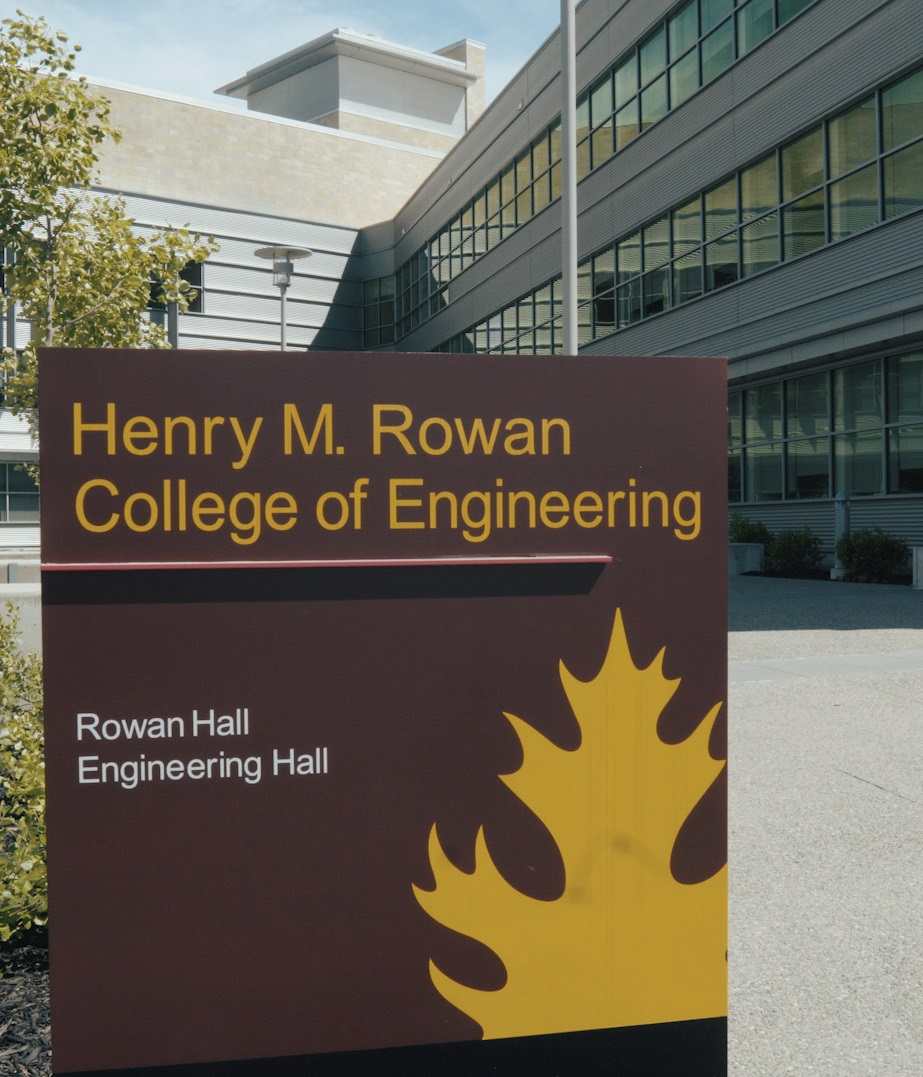Waters and TA Instruments technology is utilized by Rowan University to develop materials research with the aim of sustainably using nature’s chemistry to optimize the performance of materials.
Technology: TA Instruments Discovery Analyzer TGA 550, TA Instruments Discovery Hybrid Rheometer (HR-2), Waters Alliance HPLC, TA Instruments Discovery Differential Scanning Calorimeter DSC 2500, TA Instruments Q800 Dynamic Mechanical Analyzer, ACQUITY APC System.
Engineering a Greener Approach to Polymers
Investigations concerning the utilization of renewable feedstocks in place of fossil-based raw materials are receiving increasing interest in modern polymer science from industrial, academic, and government organizations.
Bio-based plastics are being produced to restrict the use of plastics derived from petrochemicals. The creation of (bio)degradable, recyclable, and/or sustainable polymers is a key solution to the unattractive social, environmental, and economic expenses that have been linked to the use of fossil-derived chemicals.
The Henry M. Rowan College of Engineering at Rowan University, residing in Glassboro, New Jersey, has opened its Sustainable Materials Research Laboratory (SMRL).
The laboratory hopes to develop applied and fundamental science and engineering technology regarding materials research.
SMRL utilizes advanced materials analysis technology from Waters to grow understanding of viable bio polymers and polymeric composites, along with discovering applications in product design.

Image 1. South Jersey Technology Park (West Campus) at Rowan University where SMRL resides.
The associate professor of chemical engineering at Rowan University, Dr. Joseph F. Stanzione, III, manages the SMRL research team that concentrates on the use of building blocks sourced from biomass.
They are used in the development of polymer additives, composites, and polymers for a varied range of applications, such as packaging, therapeutics, energy storage and capture, high-performance composites and polymers, sealants, adhesives, and coatings.
We have in hand an ever-growing, foundational knowledge base for this work that we see being translatable to the industrial scale thanks to our use of the structure-property relationships approach. And, we are doing just that with our government, academic, and industrial partners. Additionally, our goal in the near future is to transition some of our technology into biomedical applications. Our technologies have potential applications in the drug delivery field, as well as in developing better prosthetics.
Dr. Joseph F. Stanzione, III, Associate Professor of Chemical Engineering, Rowan University
The work by SMRL could possibly have huge implications for the whole polymer supply chain and any field that uses plastics, which is nearly every industry imaginable.
Dr. Stanzione notes, “It's high-risk, high-reward research. However, it is worth pursuing and the information we gather will help us move forward and promote meaningful and, hopefully, long-lasting, change towards sustainability.”
Biomass Building Blocks
In the past, the rising prices of oil-derived chemicals and the depletion of fossil resources have been factors that triggered the reconsideration of plastics manufacturing and usage.
The utilization of petroleum for chemicals, non-fuel use, and plastics at present is roughly around 6%. Scientists predict this consumption to triple by 2050 to around 20%, a significant rise in the amount of oil consumption for these categories of material.
Both regulatory agencies and customers are showing increasing demand for the production of more sustainable and environmentally friendly processes and materials.
We can get fatty acids from triglycerides, for example, and those long aliphatic chains can provide flexibility to the polymer network while also providing decent chemical resistance and hydrophobicity. On the flip side, aromatic molecules from certain types of biomass such as lignin and other sources afford high thermal stability, as well as enhance the stiffness. So, if you were to combine these molecules in certain concentrations and formulations, you can tailor the toughness versus the strength of the material, as well as the thermal stability and chemical resistance you need for a particular application. With this knowledge, we can develop new plastics, polymers, and composites with better properties compared to what we currently use.
Dr. Joseph F. Stanzione, III, Associate Professor of Chemical Engineering, Rowan University
Employing the technology offered by Waters and TA Instruments, Rowan University can gain a complete picture of the quantitation, identification, chemical structures, formulations, and the performance and physical factors that enhance their R&D projects regarding structural-property relationships.
A “molecularly hybrid approach” is how Dr. Stanzione describes their research methodology. The research strategically observes nature’s building blocks to establish whether their inherent characteristics or attributes can be blended to create new, safer, better, and more environmentally friendly polymers and monomers.
His team is exclusively searching for bio resources that can:
- Contribute to the circular economy and sustainability
- Decrease toxicity
- Produce unique composites, plastics, and polymers
- Enhance the properties of material

Image 2. Dr. Stanzione in the Sustainable Materials Research Laboratory with SMRL Ph.D. students Tristan Bacha (middle) and John Chea (right)
The research undertaken by SMRL covers the complete polymer supply chain, from the extraction of materials to the development of products, to commercialization on a larger scale, and lastly to disposal and/or recycling.
This 10,000 foot perspective of the whole process makes Dr. Stanzione and his team have an effective approach to the possibility of changing the way that society extracts, uses, and disposes of polymers.
Dr. Stanzione outlines how this research can apply to several projects, “One of our major projects has been identifying the building blocks we can get from biomass, the functionality associated with those building blocks, and how we can combine them in strategic ways to make the best structural composites.”
Dr. Stanzione continues, “This is closely related to the world of thermosets, so we’ve been using our molecular hybrid approach to develop such polymers out of these bio-based building blocks with very good success.”
This results in further ideas concerning the potential applications for this research.
Those thermosets could be used for coatings, adhesives, and structural composites. And now we’re looking into whether we can develop them into thermoplastic films and fibers for clothing apparel or other things that use fabrics, like parachutes. We want to step back, see the big picture and say, ‘Okay, we have these data. We have these relationships. How can this be useful for other applications?’
Dr. Joseph F. Stanzione, III, Associate Professor of Chemical Engineering, Rowan University
The increasingly diverse research projects managed by SMRL demand a varied range of analytical instrumentation and scientific technology, which is where Waters and TA Instruments have performed such a crucial role in their research.
Dr. Stanzione states, “The instrumentation from Waters and TA Instruments helps us get the data to better understand the processing-structure property relationships. For example, the ACQUITY™ advanced polymer chromatography (APC) and high-performance liquid chromatography (HPLC) technology from Waters helps us understand our extractions in the development of thermoplastic polymers.”
Dr. Stanzione adds, “Then, the TA Instruments suite of thermal instrumentation really helps us understand some of the polymerization kinetics, their thermal stabilities, and dynamic mechanical responses to deformation.”
The range of instruments used to offer solutions for particular challenges allows the researchers at SMRL to look at the bigger picture, and the possibility for the development of new products.
Dr. Stanzione outlines the significance of these instruments in proving the hypotheses of his team and underpinning the research and test, “Sometimes we want to be able to transform these bio-based building blocks into the monomers that we can use in particular polymerization chemistries.”
He continues, “So again, the instruments will help us confirm whether or not we’ve done those successfully. Then once we create these polymer systems, the instruments can help us with understanding the polymerization kinetics and, once cured, their performance.”
This continues as the SMRL team probes more intensely into the polymer supply chain.
These instruments can also help us understand the structural-performance relationships. What are their thermal stabilities? What are their mechanical properties? And then what happens to these plastics after use? Do they get recycled or can they be recycled? Or can they decompose or are they biodegradable? So again, these Waters and TA Instruments technologies help us from the very beginning to the very end.
Dr. Joseph F. Stanzione, III, Associate Professor of Chemical Engineering, Rowan University
Growing Interest in Materials Analysis
Several manufacturers working in a varied range of fields are beginning to understand the importance of materials analysis and the knowledge of industry leaders, for example Waters and TA Instruments.
The range of custom-built technologies combined with broad-minded partnerships, such as the one between Waters and TA Instruments and SMRL, can help industry, academia, and the government to correct similar real-world issues.

Image 3. Ph.D. student, John Chea, working with Waters instrumentation at Rowan University.
Chemical Engineering at Rowan University
The aim of SMRL is to intelligently use nature’s chemistries, including those naturally provided in the form of fossil reserves and those that are renewed by the biosphere each year, to enhance global sustainability and optimize material performance.
Projects entail initiatives supported by the National Science Foundation (creating polymers from bio-oils) and the National Institutes of Health (investigating the toxicity of components in composites and plastics).
Initiatives are also funded by the Army Research Office, Department of the Army, from high performance composites and polymers, to the development of additive manufacturing technology, to examining flame-retardant materials created from renewable sources, and more.

Image 4. Samuel H. Jones Innovation Center located at the South Jersey Technology Park (West Campus) at Rowan University.
We’re very much interested in continuing to advance the science of sustainable materials by focusing on making polymers and polymer composites out of renewable resources for a wide variety of applications. But at the same time, we’re continuing to develop highly skilled, knowledgeable students who can enter the workforce and use what they learned here at Rowan University throughout their professional careers.
Dr. Joseph F. Stanzione, III, Associate Professor of Chemical Engineering, Rowan University
Training the Next Generation of Scientists
The next generation of scientists and chemical engineers are being trained by SMRL to allow undergraduate students, graduate students, and postdoctoral research fellows from Rowan University to directly take part in the research process.
The fields of research undertaken by students and fellows include thermosets, thermoplastics, energy materials, chemical processing, and additive manufacturing.
Dr. Stanzione is now working with over 20 undergraduate students, three master’s students, eight doctoral students, and multiple postdoctorates at SMRL on these cutting-edge projects.
His team performs research and assists in projects that meet the key requirements of partners and clients, while simultaneously gaining the hands-on experience that they will need in their scientific careers.
A great deal of hands-on knowledge is gained with both the techniques and instrumentation, along with acquiring soft skills like communication and presentations to the partners, potential collaborators, or clients of SMRL.
The research tools from Waters and TA Instruments were specifically selected by Dr. Stanzione as they offer the highest degree of analysis, yet their user-friendly nature makes them accessible for students.
The chance to collaborate in research grade analytics during an undergraduate degree is a very uncommon occurrence. The partnership between Waters and TA Instruments and Rowan University offers a significant opportunity for students in their educational program, helping them to be ready for the next steps in their careers.

Image 5. The Henry M. Rowan College of Engineering buildings at Rowan University.
Students learn how to do the science and do it well. They collect data and learn how to interpret that data. They’re seeing it generated in real time, and they learn to decipher any trends. And now they have this toolset in their pockets. So, when they go out into the real world and work on very similar projects, it makes them a lot more marketable and productive because they’ve had exposure to all this different instrumentation, and they bring that experience with them to their future employers.
Dr. Joseph F. Stanzione, III, Associate Professor of Chemical Engineering, Rowan University
References and Further Reading
1. “National University Rankings.” US News and World Report. Available at: https://www.usnews.com/best-colleges/rankings/national-universities [2019].

This information has been sourced, reviewed and adapted from materials provided by Waters Corporation.
For more information on this source, please visit Waters Corporation.